Diaphragm
Diaphragm, diaphragma, - unpaired, broad muscle, in the form of a dome closes the lower aperture of the thorax.

Beams of the muscular part of the diaphragm begin from the inner edge of the lower aperture of the thorax. Therefore, in the diaphragm distinguish the sternum, costal and lumbar parts.
The sternal part , pars sternalis, is the smallest part of the diaphragm. It starts from the posterior surface of the xiphoid process and passes into the tendon center.
The costal part , pars costalis, constitutes the largest part of the diaphragm and starts from the inner surface of the bone and cartilaginous parts of the six lower ribs. Muscular tufts, going up and inside, go to the tendon center.
The lumbar part , pars lumbalis, starts from the lumbar vertebrae and consists of two, right and left legs, crus dextrum et crus sinstrum.
Each of the legs originates from the anterolateral surface of the bodies I-III (right I-IV) of the lumbar vertebrae and from the medial and lateral arched ligaments, ligg. Arcuata mediale et laterale.
Medial arched ligament, lig. Arcuatum mediale, in the form of a dense connective tissue formation, is arcuately stretched over the anterior surface of the large lumbar muscle, m. Psoas major, from the body to the transverse process of the I lumbar vertebra.
Lateral arcuate ligament, lig. Arcuatum laterale, is thrown over m. Quadratus lumborum from the transverse process of the lumbar vertebra to the XII rib. The medial muscle bundles of the diaphragmatic legs, converging to the top, converge and form aortic aperture, hiatus aortkus, which passes the aorta and thoracic lymph duct, ductus thoracicus. Somewhat higher the medial muscle bundles of both legs border the esophageal open, hiatus esophageus, the esophagus, esophagus, and vagus nerves, rm. Vagi, and then heading towards the center.
In addition, in the legs of the lumbar part of the diaphragm, two pairs of cracks are noted: a gap through which the unpaired vein passes on the right, v. Azygos, and the inner, large and small, nerves, nn. Splanchnic) major el minor, on the left - semi-unpaired vein, v. Hemiazygos, and the same nerves, and the gap through which the sympathetic trunk passes, l rune us sympathicus.
Between the breast and rib portions of the diaphragm, as well as between the rib and lumbar, there are more or less pronounced triangular slits: sometimes they are the site of the formation of d and af par-small hernias.
The muscle bundles of the diaphragm, heading toward the center, pass into the tendon, forming the tendon center, centrum lendineum. Asht at the hour the boom of the diaphragm looks like a shamrock, one blade of which is facing anteriorly (on it lies the heart ), and
The other two - to the sides (they have lungs). In the posterior part of the tendon center, to the right of the median line, there is an opening of the inferior vena cavae, foramen venae cavae (see Figures 316, 317), through which the lower hollow vein passes.
The thoracic and abdominal surfaces of the diaphragm are directly covered with fascias, and those in turn are connected by connective tissue, respectively pleural and subperitoneal tissue, which is the basis for the serous cover of the parietal peritoneal leaf from the abdominal cavity, the parietal pleural membrane and the pericardium from the thoracic cavity. At the same time, the lungs and heart adhere to the thoracic surface of the diaphragm, the liver, stomach, spleen, and the areas of the diaphragm that are not covered by the peritoneal sheet of the peritoneum-the pancreas, duodenum, kidney and adrenals.
In the relaxed state, the diaphragm is in the form of a canted spherical bulge that faces the thoracic cavity. In the diaphragm, you can distinguish two domes - the right and left. The tops of the cupolas reach to the right of the level of the fourth intercostal space, and to the left of the fifth intercostal space. With the reduction of the diaphragm of the dome, it is flattened, as a result of which the capacity of the chest cavity increases.
Function: the diaphragm is the main respiratory muscle, which, when contracted, flattenes, promotes inspiration, and takes the form of a sphere when exhaled.
Innervation: nn. Phrenici (Cin-Cv).
Blood supply: aa. Pericardia-cophrenicae, phrenica superior, phrenica inferior, musculophrenica, intercostales posteriores.

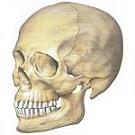
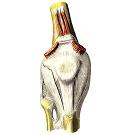
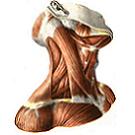
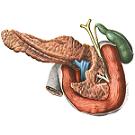
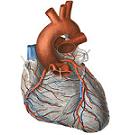

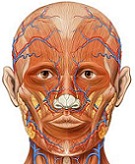

Comments
When commenting on, remember that the content and tone of your message can hurt the feelings of real people, show respect and tolerance to your interlocutors even if you do not share their opinion, your behavior in the conditions of freedom of expression and anonymity provided by the Internet, changes Not only virtual, but also the real world. All comments are hidden from the index, spam is controlled.